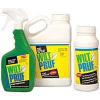Integrated Pest Management
The Garden Factory® is proud to operate expansive greenhouses on our property on Buffalo Road, where we are able to grow annuals, perennials and vegetables for our customers. One of the greatest advantages of this, from a consumer’s perspective, is having information available about the origin and growth of the plants you purchase.
Lately in garden news, there has been concern regarding Neonicotinoids, a specific type of pesticide that has proven to be detrimental to honeybees. (http://www.wired.com/2014/06/garden-center-neonicotinoids/) Reports have shown that many plants found at “big box” stores contain these pesticides. The Garden Factory® is proud to have been 99.9% chemical free in our greenhouses for 5 years now – that is to say, Neonicotinoids will not be found in our plants.
The first step in having a chemical free greenhouse is cleanliness, and ensuring a weed-free workspace. Then, you must start with chemical free seeds and plugs. The Garden Factory® grows our vegetables from seed, purchased from Ball Seed Corp, who confirms that their vegetable seeds are organic or non-treated. For the annuals we grow, we purchase plugs from Van Vugt Greenhouses in New Jersey, which are 100% biologically grown. Started plants are dipped in Nematode and root shield to ensure cleanliness, and planted into soil treated with a Trichoderma root shield. The Trichoderma lives in the surface of the roots, fighting fungal disease there. This rids us of the need to use chemical fungicides.
The fun and interesting part of Integrated Pest Management is that, as growers, we create an ecosystem within our greenhouses. We utilize beneficial bugs from Biobest Sustainable Crop Management to control thrips and aphids – two damaging pests. Our ecosystem includes bees, butterflies, spiders and other insects.
You may have noticed the past few years that some of your plants come with a paper sachet hooked on to the stem. These sachets contain Amblyseius cucumeris, a predatory mite. These mites prey on the larval stage of thrips. At the volume we produce plants at The Garden Factory®, we use about 50,000 sachets annually. Sachets are one way to introduce beneficial bugs into the greenhouse environment, and another is to grow banker plants.
Banker plants support the growth of a prey species (not a pest) that disperse into the greenhouse in search of pests. The prey species does not feed on the banker, or host plant. To rid our greenhouse of adult thrips, we utilize banker plants to support the growth of Orius insidiosus, a flying beetle that feeds on adult thrips and other soft bodied plant-eating pests. These guys can kill 100-200 thrips a day! To host the Orius beetle, we grow Purple Flash peppers in hanging baskets. Because of the high pollen count of these plants, they are very attractive to this particular flying beetle.
Another way we utilize banker plants is to control aphids. Oats are grown in hanging baskets, covered with hairnets, and we introduce cereal aphids onto the plant. Cereal aphids (Rhopalosiphum padi) are a grass pest that don’t attack most bedding and ornamental plants – which is why we can host them in the oats without worry they will attack the plants we are growing for our customers. Aphidius colemani, a parasitic wasp, is introduced into the banker plant once there are enough cereal aphids to support them. The wasps sting the aphids, laying their eggs inside. Once there are enough parasitic wasps present, the hairnet is removed from the banker plant, allowing the wasps to travel throughout the greenhouse and feed on pest aphids.
We are excited to be able to provide chemical free, locally grown plants and are happy to answer any questions our customers may have. Please contact us by phone, email, or a facebook post if you’d like any further information.







